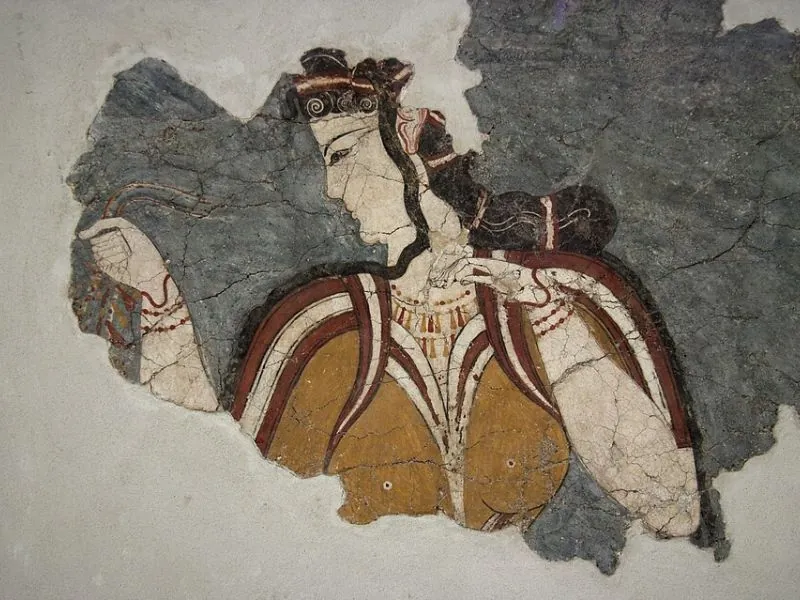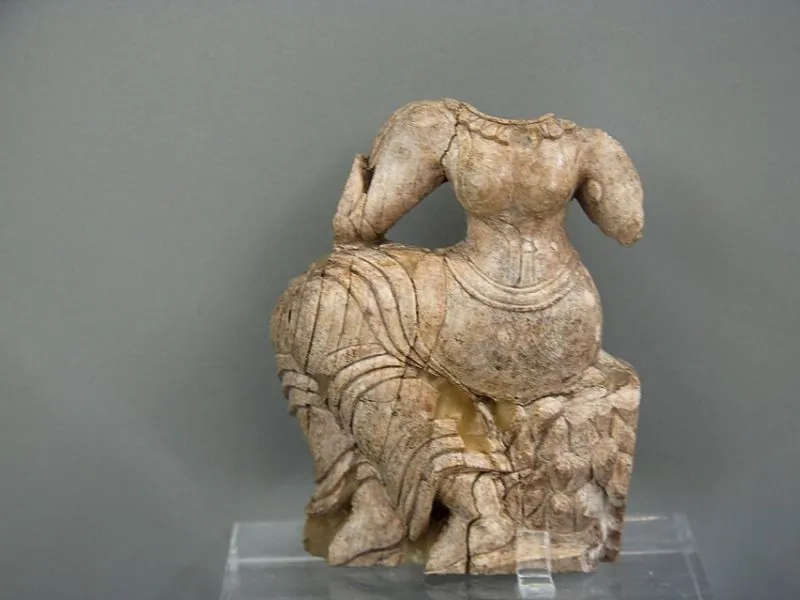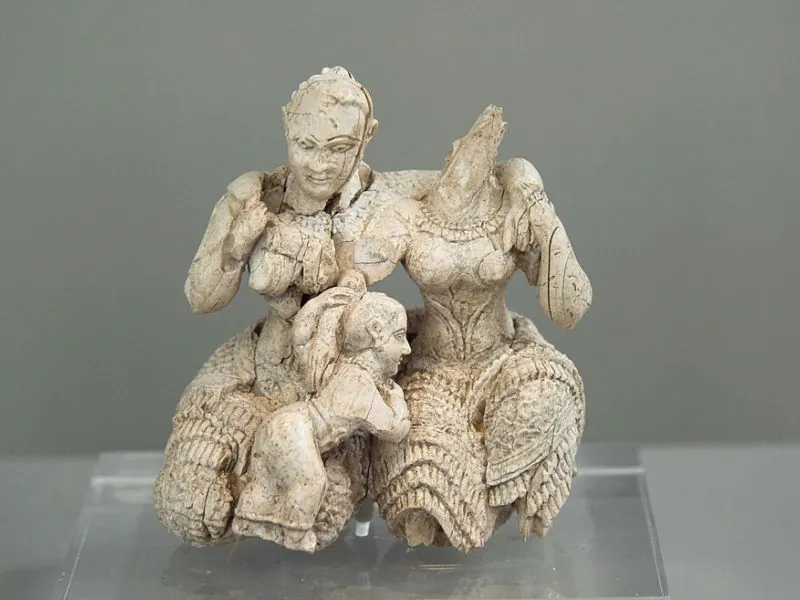
In the ruins of Mycenae, where tales of kings, warriors, and sieges have long dominated the story, a quieter force once moved through corridors of stone and ceremony: the women of Mycenae.
Though long overshadowed by their male counterparts, these women played vital roles as queens, priestesses, and artisans, each shaping the cultural, spiritual, and economic framework of this formidable Bronze-Age society.
From the palace megaron to sacred groves and bustling workshops, their presence was embedded in the very structure of the Mycenaean world. Far from passive figures, the women of Mycenae were integral to the rhythms of power, belief, and prosperity.

Among the highest-ranking women of Mycenae was the wanassa—a title interpreted by scholars as “queen” or “lady.” In the Linear B tablets, this figure often appears alongside male rulers, not as a mere consort but as a figure of administrative and possibly religious power in her own right.
The wanassa may have overseen ceremonial duties, estate management, and diplomatic functions. Mycenaean queens are thought to have wielded considerable influence, especially in religious contexts, echoing their Minoan predecessors where priestess-queens were a common motif in art and ritual.
The opulence of tholos tombs and grave circles also speaks volumes: the inclusion of richly adorned women in elite burials suggests their status matched, if not sometimes rivaled, that of their male counterparts.
Religion in Mycenae was not confined to kings and male shamans. Women served as priestesses, sacred functionaries who tended altars, orchestrated offerings, and preserved ritual knowledge.
Some Linear B records from Pylos and Knossos refer to priestesses managing sanctuaries, receiving rations, and overseeing temple estates—evidence that likely reflects similar structures in Mycenae. The spiritual life of the citadel depended on these women to maintain divine favor through ritual performance and intercession.
Figurines of female deities and worshippers, often found in domestic shrines, suggest a world in which the sacred was feminized and priestly authority embodied by women. Their role, both seen and symbolic, bridged the human and divine with quiet authority.

Beyond the palace and the sanctuary, the women of Mycenae labored in workshops that kept the wheels of the economy turning. Textile production was a cornerstone of Mycenaean wealth and prestige, and women formed the majority of the workforce.
Linear B tablets list dozens of women assigned to spinning, dyeing, and weaving—many organized under female supervisors. These weren’t just laborers; they were skilled artisans, possibly managing inventories and distributing finished goods for palace use or foreign trade.
The prominence of weaving in mythology—from Helen’s loom to Penelope’s unravelling thread—echoes this societal importance. In Mycenae, weaving was not simply a craft but an economic lifeline and cultural metaphor, and it belonged to women.

What a society values in life, it often immortalizes in death. The tombs of Mycenae—shaft graves, chamber tombs, and monumental tholoi—hold remnants of female power in the form of jewelry, mirrors, figurines, and seals. Some women were buried with as much splendor as men, suggesting noble or priestly status.
Their graves contain hints of their roles: the presence of sacred symbols, luxury goods, and imported ornaments implies travel, influence, and wealth. In particular, the presence of goddesses in Mycenaean iconography—potnia, the “mistress”—may reflect the elevated status of mortal women who served or symbolized them.
These tombs, carved into hillsides and sealed with care, whisper stories of women remembered as dignitaries and mediators of the sacred.
The Mycenaean world was not a man’s world alone. Through their roles as queens managing estates, priestesses invoking divine favor, and artisans sustaining industry, the women of Mycenae helped define the very essence of their civilization.
While the thunder of war and conquest often claims the loudest voice in ancient history, the enduring structures of Mycenaean culture—from its art and religion to its economy—carry the imprint of its women.
Their legacy lies not only in grave goods and inscriptions but in the invisible scaffolding of palace life. In honoring the women of Mycenae, we uncover a richer, more nuanced view of a society built as much on grace and intellect as on bronze and battle.